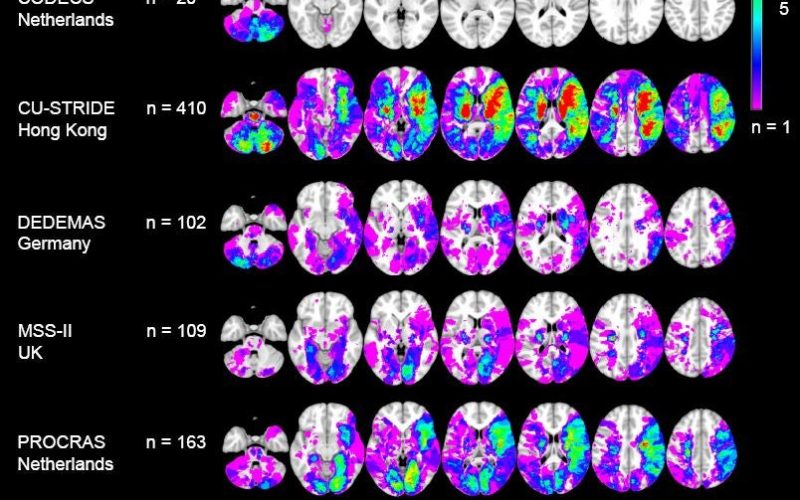At present, immediately after cerebral infarction, it is not yet possible to accurately predict which patient will develop cognitive impairment and which will not. For a good rehabilitation program, clarity about the prognosis is very important. In order to better predict the impact of a brain infarct, international research groups will collaborate on a brain vulnerability map. The consortium is coordinated by Professor Geert Jan Biessels of the UMC Utrecht Brain Center. An article on the pilot for this multicenter study is published in Alzheimer’s & Dementia: Diagnosis, Assessment and Disease Monitoring.
A significant proportion of patients who have suffered a brain infarction develop cognitive disorders. These include problems with memory, concentration, orientation or language. Currently, immediately after the brain infarct, it is not yet possible to accurately predict who will continue to suffer from cognitive impairment. Researcher Nick Weaver explains: “It is known that the nature and severity of cognitive symptoms is related to the location of the brain infarct. By linking location to short- and long-term cognitive measures, we can develop ‘vulnerability maps’ that indicate critical sites for damage and are predictive of cognitive outcome. So far, these vulnerability maps are incomplete because brain regions in which infarcts occur less frequently could not be examined. To map all possible spots would require data from thousands of patients. Such a large study is not possible from an individual research center, which is why we set up a large international collaboration.”
The pilot was conducted with 6 international research centers, with data from 878 patients. This was coordinated by researchers from Prof. Biessels’ group: Dr. Nick Weaver, Dr. Matthijs Biesbroek and Dr. Hugo Kuijf. The data were successfully integrated into a unified dataset. Weaver: “The largest individual study to date had 410 participants, so in the pilot, that number has already more than doubled. We have therefore been able to map a much larger part of the brain. First we had 20% of the brain in the picture, now 46%. This confirms our idea that combining cohorts is feasible and has clear added value. This allows us to create a more complete vulnerability map of the brain.” For the follow-up project, 43 research groups have already expressed interest in participating, which means that we are already talking about data from more than 3,500 patients.
These are good developments for patients suffering a brain infarction. Initiator and coordinator Prof. Dr. Geert Jan Biessels explains, “The vulnerability maps resulting from these international projects can be applied in clinical practice to better predict cognitive impairment after a brain infarct. This gives patients more clarity about their prognosis. The sooner patients receive clarity with appropriate therapy, for example through cognitive rehabilitation if possible, the better!”
